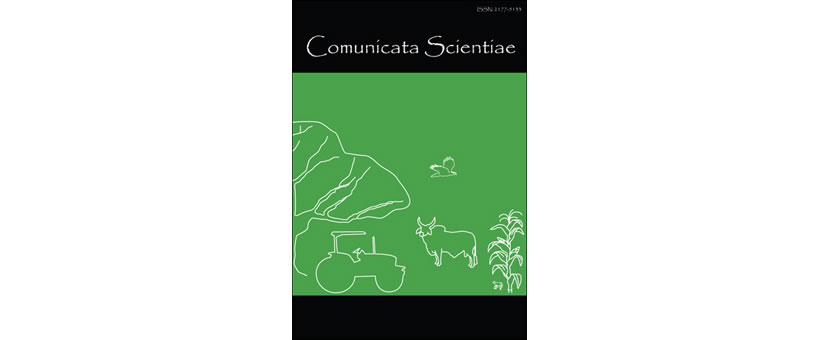Environmental and genetic factors on the growth curve of crossbred goats
DOI:
https://doi.org/10.14295/cs.v3i3.263Keywords:
efeitos não-genéticos, herdabilidade, maturidade, modelos não-linearesAbstract
This work aimed to estimate the growth curve, by means of non-linear models, of 399 Boer X Anglonubian crossbred goats bred in the microregion of Teresina, Piauí State, Brasil, born between 2006 and 2010, and environmental and genetic factors affecting this curve. The adjusted models were Gompertz, Logistic, Von Bertalanffy, Brody and Richards. After adjustment of these models, a study of the environmental effects on the growth curve was proceeded, considering of year, season, type of birth, sex, and herd effects. The averages of weights were low indicating reflection of the adopted range breeding system. The Gompertz model presented the best fit according to the criteria QMR, R², percentage of convergence, behavior chart and DMA. Significant influence was found (p<0,05) of year and season of birth, type of birth, sex, and flock effects on the A, B and k parameters of Growth curve adjusted and on the estimated weights from the fitting curve. The Absolute Maximum Growth Rate was early observed at 35 days old, indicating that the animals suffered nutritional deficits which reflect on their growth, especially in the post-weaning. The estimated heritabilities for curve parameters were of low magnitude, resulting in little change in the growth pattern of the animals studied by means of individual selection. The low genetic variance for the parameters of the curve it is because of the limits of thesample database.Downloads
Download data is not yet available.
Downloads
Published
2012-09-18
How to Cite
Figueiredo Filho, L. A. S., Sarmento, J. L. R., Campelo, J. E. G., Santos, N. P. da S., Sousa, J. E. R. de, & Biagiotti, D. (2012). Environmental and genetic factors on the growth curve of crossbred goats. Comunicata Scientiae, 3(3), 154–161. https://doi.org/10.14295/cs.v3i3.263
Issue
Section
Original Article
License
All articles published may be reproduced or utilized in any form or by any means whether specified Comunicata Scientiae, author(s), volume, pages and year. The authors are responsible for all the statements and concepts contained in the article.




